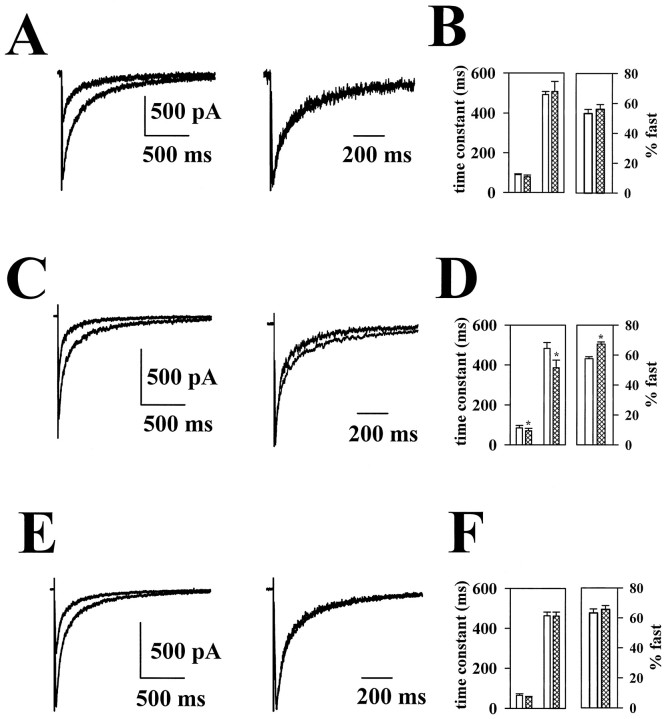Fig. 1.
Effect of N2O and noncompetitive NMDA receptor antagonists on NMDAR EACs. A, Effect of N2O on peak amplitude and on time course of NMDAR EACs is shown. Left, The effect of N2O on peak NMDAR responses. Control responses were obtained in the presence of extracellular solution bubbled with air and exhibit the larger peak current. Right, The EAC in the presence of N2O scaled to the peak NMDAR response in the absence of N2O. No effect of N2O could be detected on the time course of NMDAR EACs. B, Bar graphs summarize the effect of N2O (hashed bars) on the biexponential decay of NMDAR EACs. Open bars represent EACs in the presence of air. No significant difference was detected either in the time constant or in the relative contribution of the two components to the total amplitude (n = 6; pairedt test). C, Effect of 5 μmketamine on NMDAR EACs is shown. Note the speeding of the NMDAR EAC apparent in the scaled traces. D, Ketamine induced speeding of both the fast and slow time constant of decay and an increase in the relative contribution of the fast component (an asterisk indicates p< 0.02; n = 5; paired t test).E, F, Mg2+ (15 μm) has effects on peak and time course similar to those of N2O. No significant effect on time course was detected in six cells. For synaptic current traces in this and subsequent figures, stimulus transients have been partially blanked and truncated for clarity of presentation.

